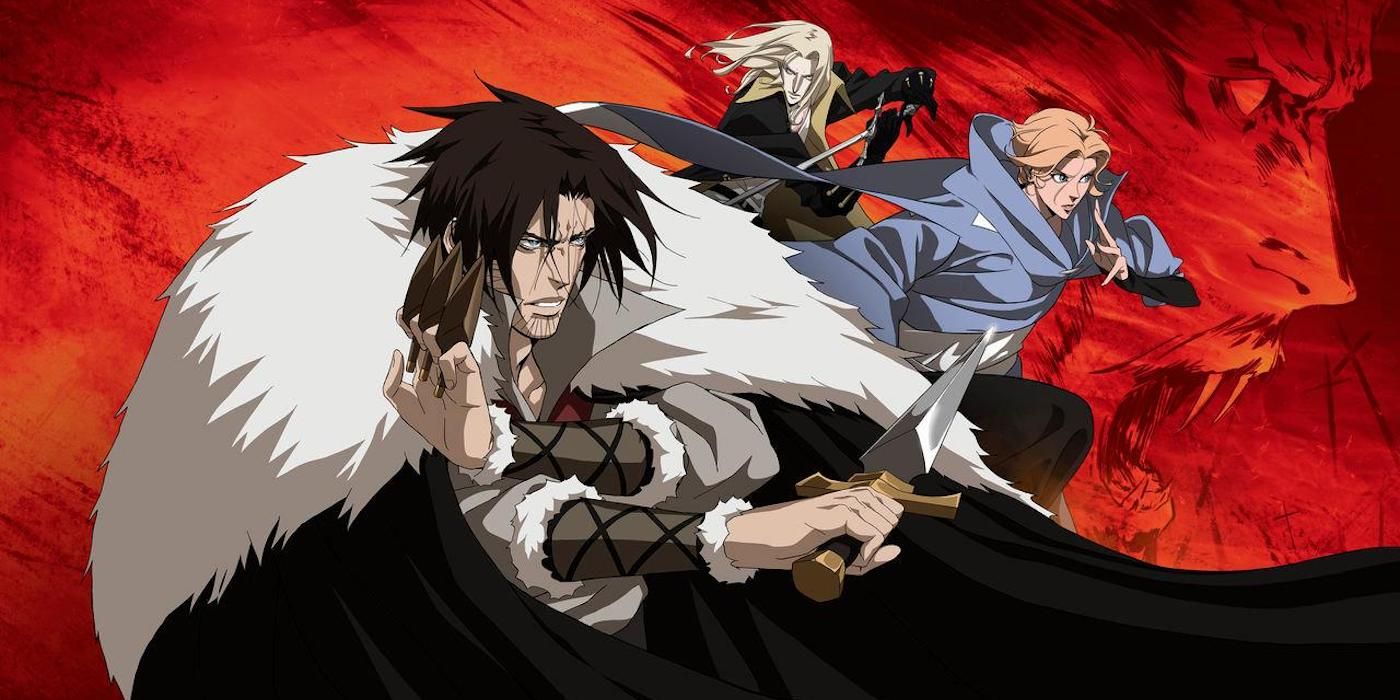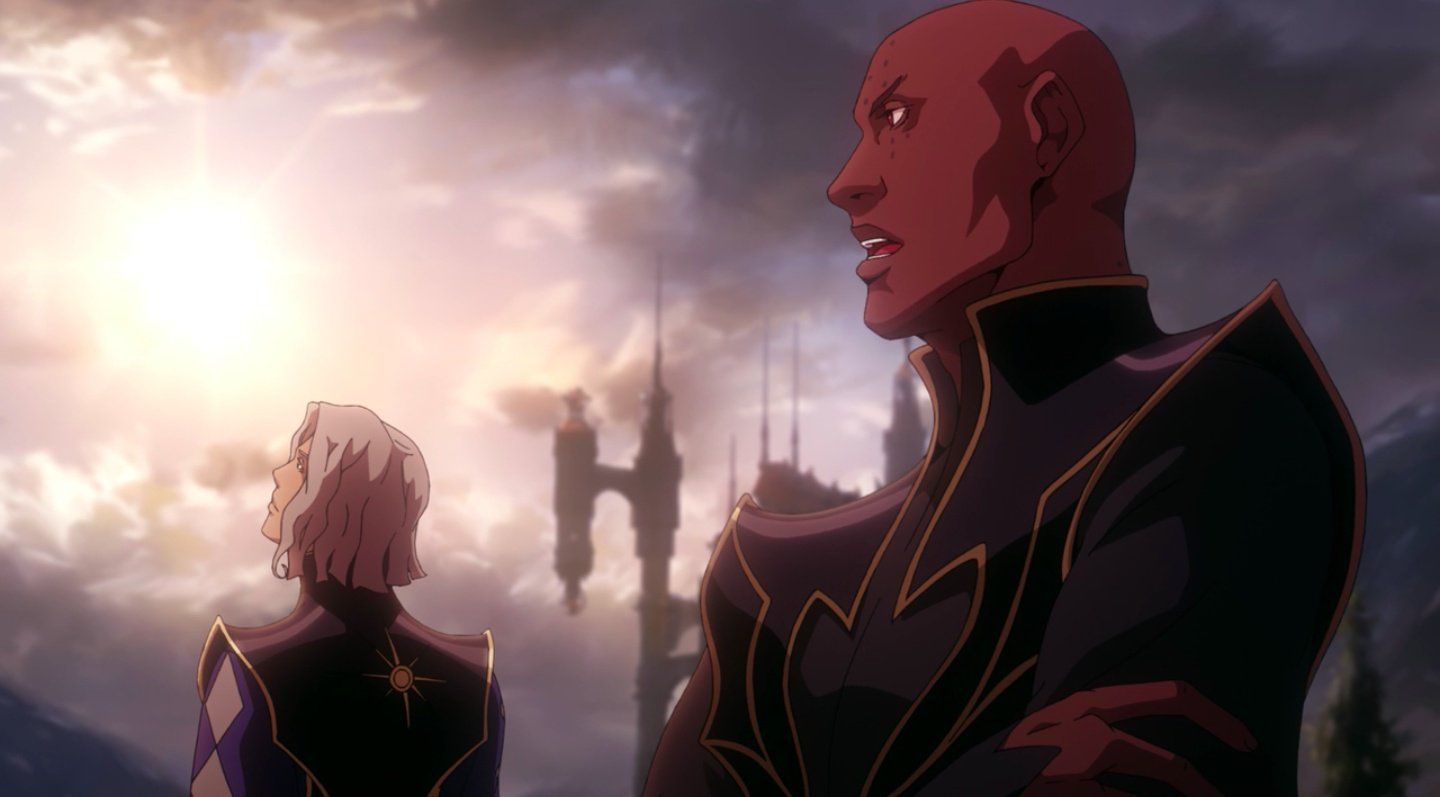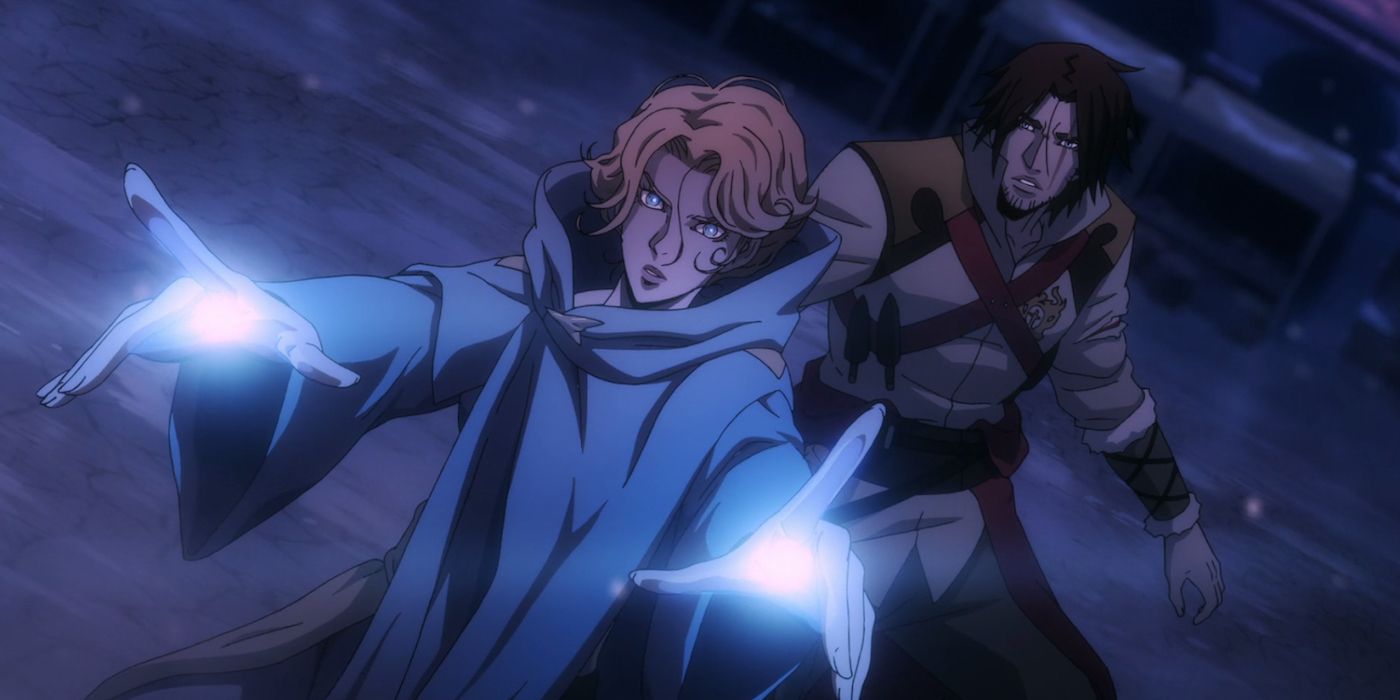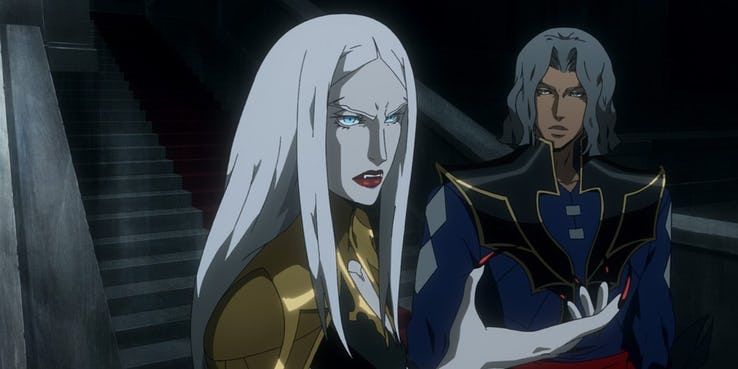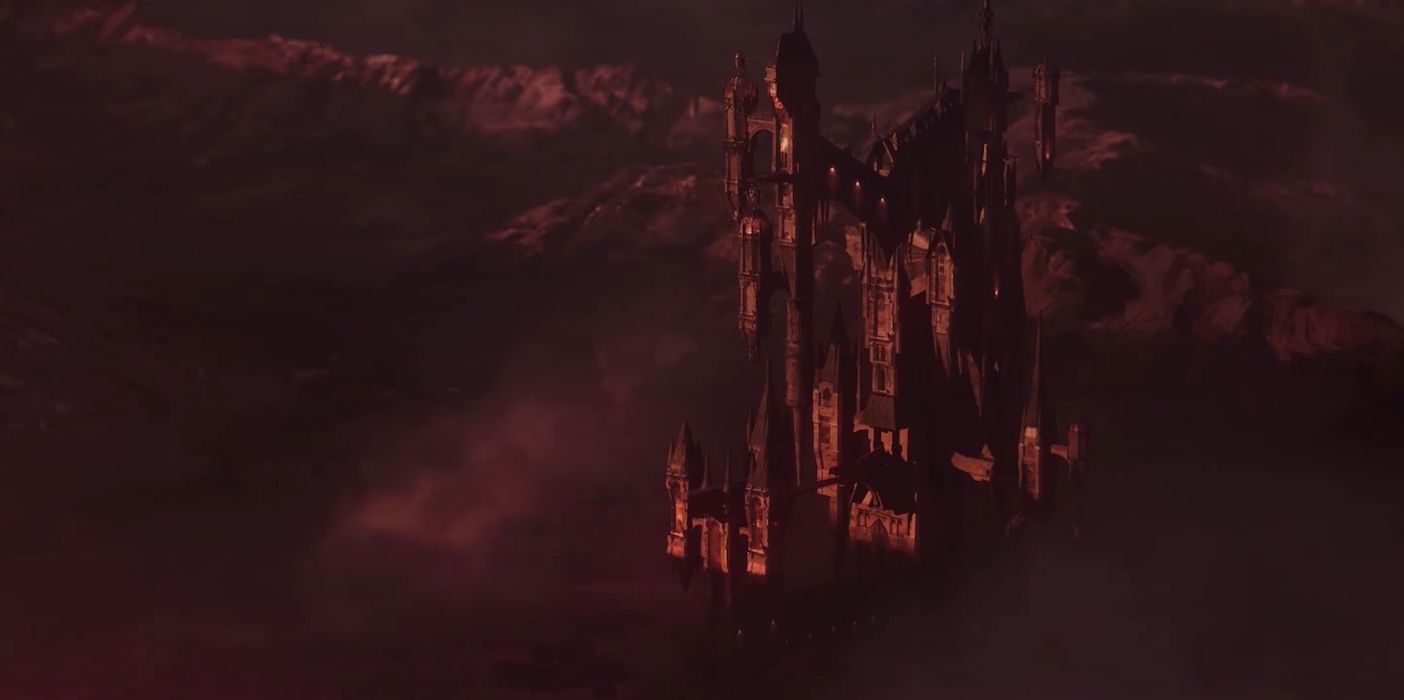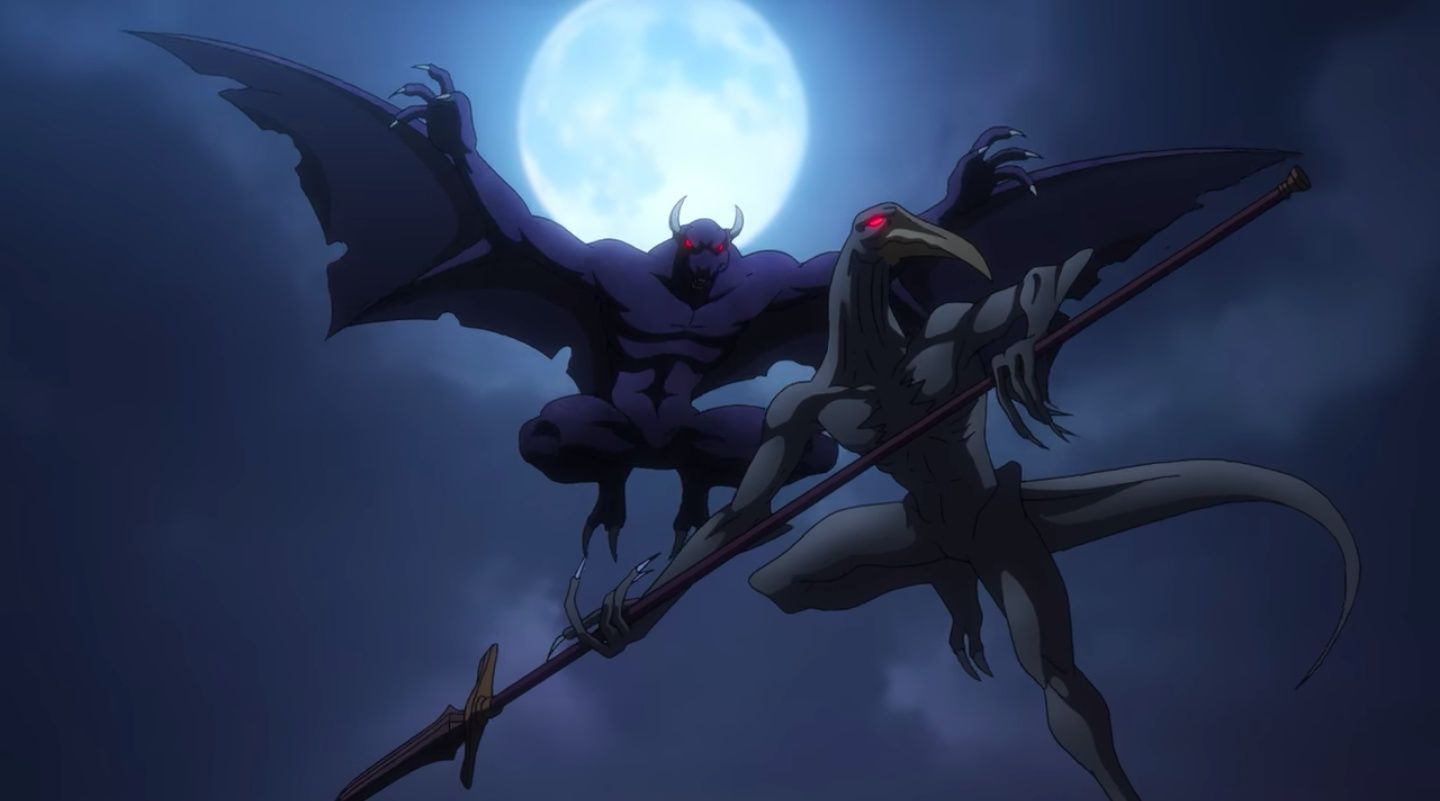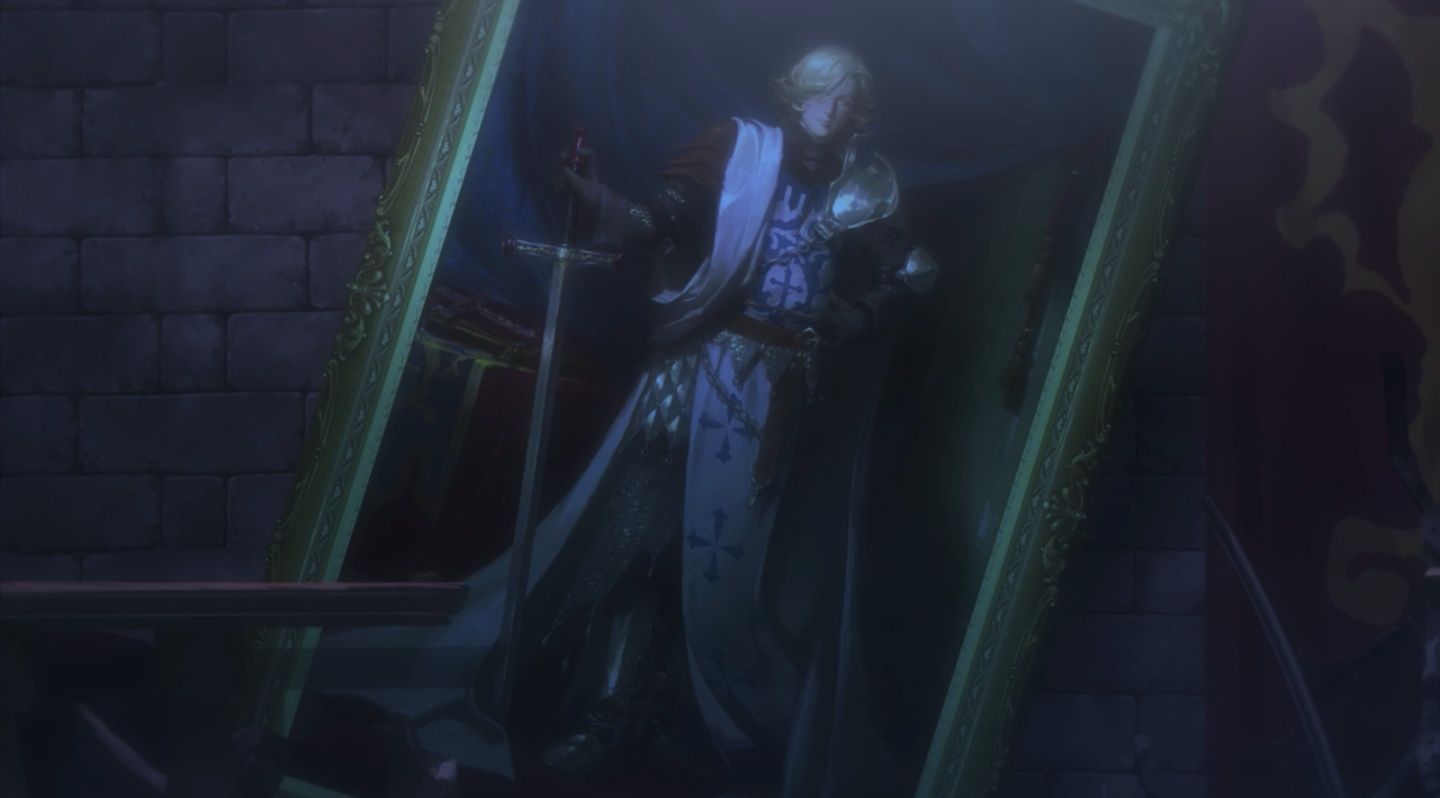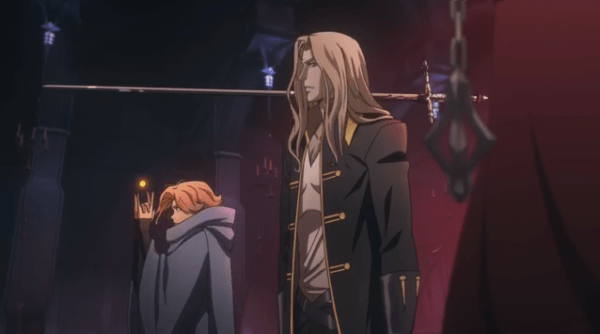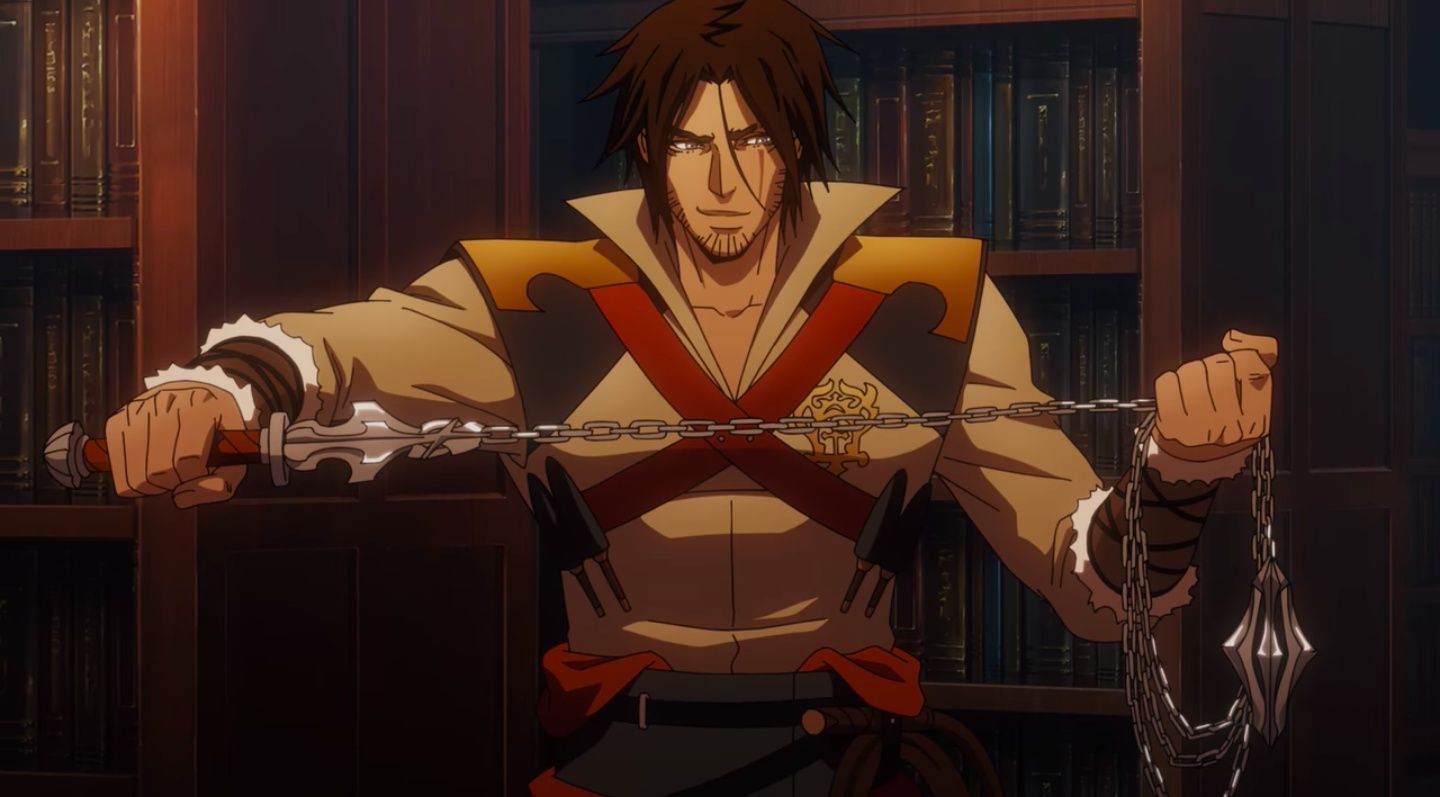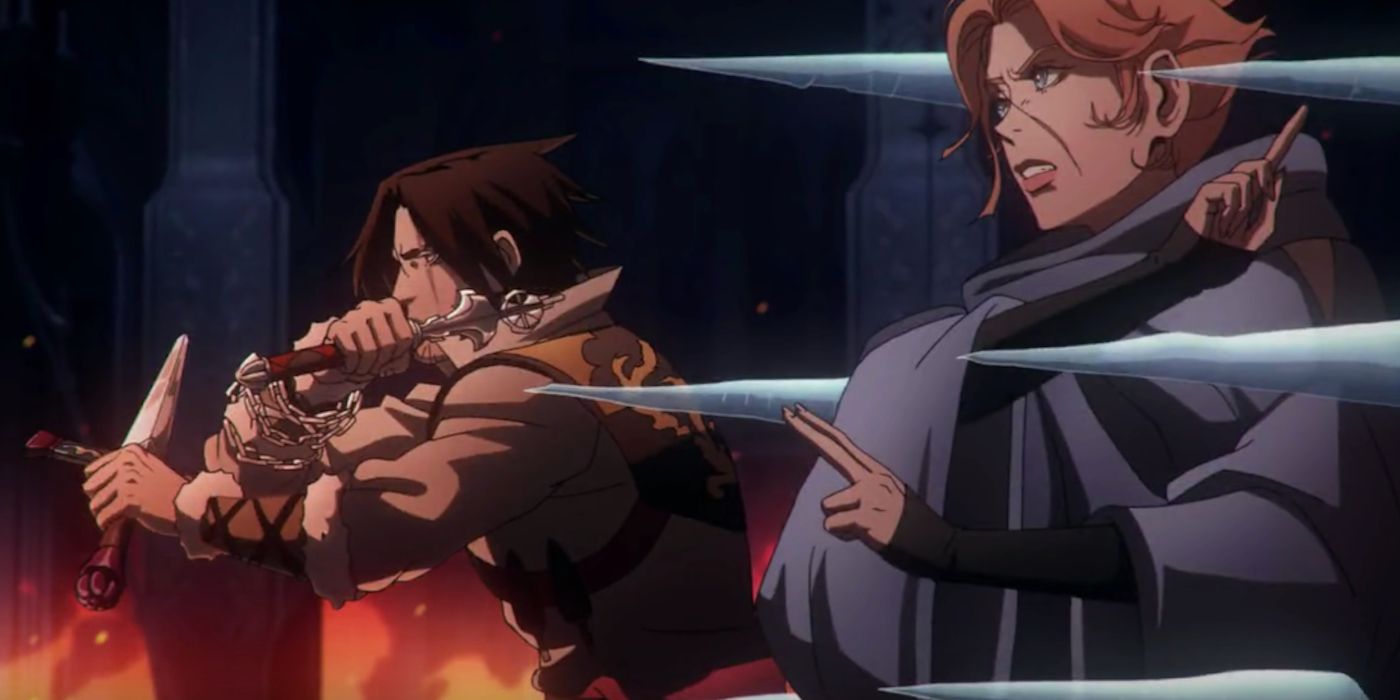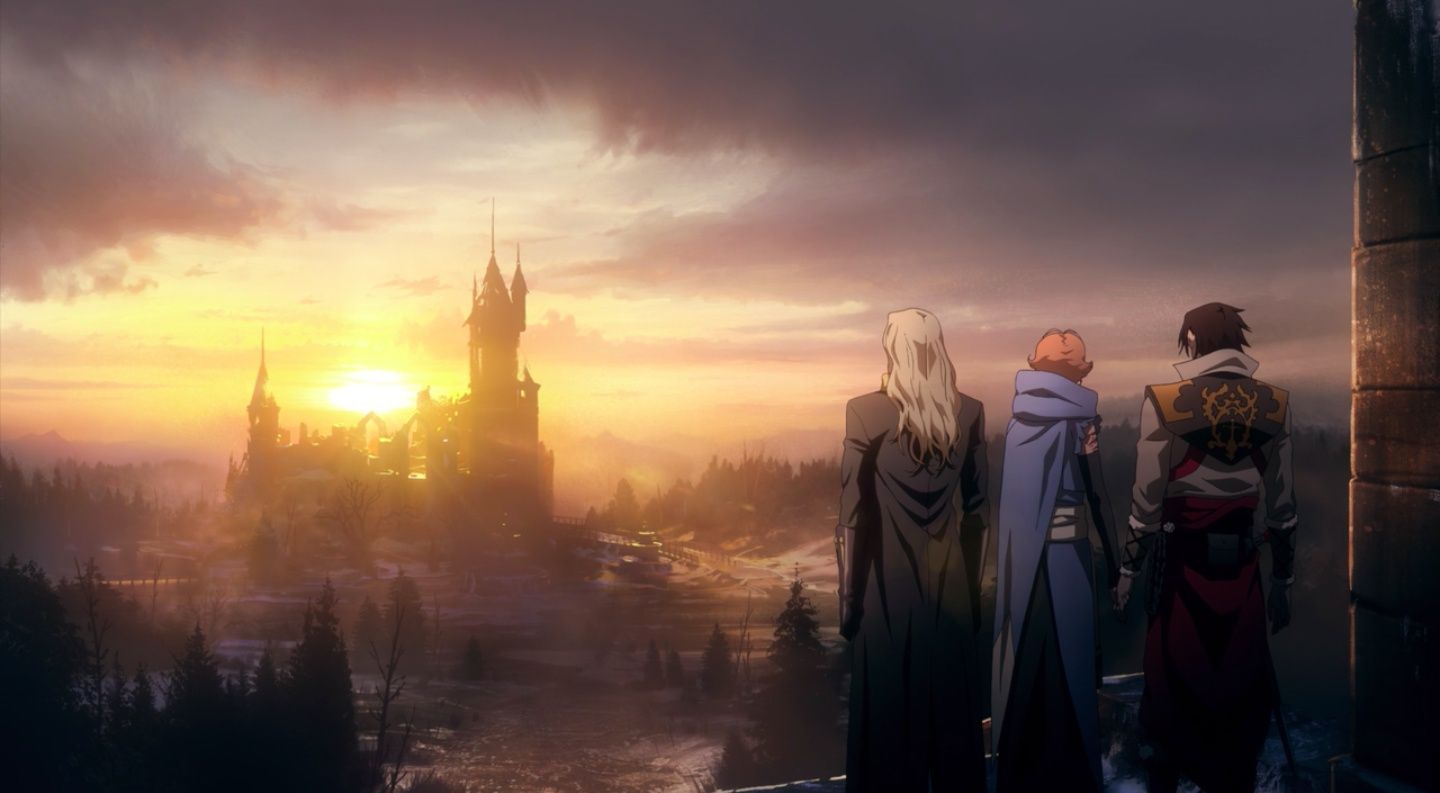WARNING: The following article contains spoilers for Castlevania Season 2, streaming now on Netflix.
Last week, Castlevania returned for its second season of bloody, vampire-killing action, boasting twice the amount of episodes as its first season and, with them, even more Easter eggs and nods to the classic video game franchise it adapts.
While the first two seasons of Netflix's acclaimed animated series serve as an adaptation of 1989's Castlevania III: Dracula's Curse, Season 2 is loaded with references to the entire long-running video game series, both overtly and in blink-and-miss-it moments, for fans to spot. Below , we run down the best nods throughout the series' second season.
RELATED: Castlevania Gets Season 3 Renewal from Netflix
The Devil Forgemasters
The biggest additions to the animated series' cast this season are Devil Forgemasters Hector and Isaac, humans aligned with Dracula that build his hellish army through necromancy. Voiced by Theo James and Adetokumboh M'Cormack, respectively, the two new characters are old friends that eventually find themselves at odds over their loyalty to the vampire lord with their falling out providing potentially the biggest setup for the series' upcoming third season.
Both introduced in 2005's Castlevania: Curse of Darkness, the direct sequel to Dracula's Curse followed Hector after Isaac betrayed him for turning his back on Dracula sometime during the events of the 1989 video game. The 2005 video game had Hector eventually teaming up with Trevor Belmont to stop Isaac's plot to resurrect Dracula and plunge Transylvania back into darkness.
The Speakers
When we first see our heroes at the start of Season 2, they are assisting Sypha Belnades' family and friends with their evacuation from Transylvania before regrouping at the Belmont Family estate. Dubbed "Speakers", the clan is comprised of nomads wielding magical powers, often elemental-based, to defend themselves from the forces of evil. The glimpse at Sypha's extended family in the season premiere is a bit of a nod to future Castlevania characters descended from her kinsmen.
RELATED: Netflix's Castlevania: The Most Gruesome Kills From Season 2
Carrie Fernandez from 1999's Castlevania on the Nintendo 64 is part of the Belnades clan and boasts similar powers as her ancestor while Charlotte Aulin from 2006's Castlevania: Portrait of Ruin is listed as partially related to the Belnades family. Perhaps the most visible descent of Sypha's family is Yoko Belnades who appears prominently in 2003's Castlevania: Aria of Sorrow and its 2005 sequel Castlevania: Dawn of Sorrow as a magic user living in Japan.
NEXT PAGE: Castlevania Easter Eggs: Carmilla, Dracula's Home and a Super-Popular Duo
Carmilla
The other most notable addition to the second season's cast is the vampire general Carmilla. One of Dracula's boldest and most trusted associates, the blonde vampire is the most influential member of his war council though she ultimately leads her own army in an insurrection against him. The character has her own extensive, though admittedly more loyal, history within the video game franchise.
Debuting in 1987's Castlevania II: Simon's Quest as a boss faced by Simon Belmont, the character has since gone on to become a recurring villain throughout the series including 1993's Castlevania: Rondo of Blood and serving as the principal antagonist in 2001's Castlevania: Circle of the Moon seeking to resurrect Dracula in 1830. Whether Carmilla will seek to revive the vampire lord under her control in future episodes has yet to be seen but she has always been a dark force to be reckoned with.
Dracula's Castle
Ever since its first appearance in the animated series, Dracula's castle has appeared as faithfully as it did in the video game source material, drawing particular visual inspiration from 1997's Castlevania: Symphony of the Night. The second season adds a new, significant trait to the structure as it can now teleport anywhere at Dracula's will while its infernal engine allows it to restructure itself internally as well.
RELATED: Netflix's Castlevania Reveals Its Dark Politics in Season 2
This is another nod to Symphony of the Night as Maria Renard remarks to Alucard that the castle's layout as altered since her last visit in Rondo of Blood with Dracula's son explaining that it constantly changes to suit those that dwell within it. The teleportation feature of the castle is an overall trait from the franchise with Dracula's castle reappearing mysteriously in Transylvania whenever the region descends into evil. This recurring trope was then subverted in Aria of Sorrow with the castle appearing in 21st century Japan rather than its usual Eastern European setting. Additionally, the device Dracula uses to teleport his castle resembles save points from Symphony of the Night.
Slogra & Gaibon
The first major battle our heroes engage in at the start of the second season is against a group of monsters led by a muscular, winged beast and a spear-wielding creature resembling a pteranodon. While easily dispatched, both monsters are also recurring villains within the Castlevania franchise.
Named Slogra and Gaibon, the duo originally appear as boss enemies in 1991's Super Castlevania IV battling Simon Belmont. They would later reappear in Symphony of the Night fighting Alucard, both individually and as a team, as he explored his father's castle. Since then, the enemies have returned in 2002's Castlevania: Harmony of Dissonance as well as Dawn of Sorrow, Curse of Darkness, and Portrait of Ruin.
The Original Belmont
As Trevor leads his allies deeper into his decrepit family home, he mentions that the first Belmont to arrive in Transylvania was his ancestor Leon to hunt vampires from his native France. A portrait of Leon is seen askew within the estate sporting the same visual design from the video games by illustrator Ayami Kojima and a crusader outfit befitting his occupation before becoming a vampire hunter.
RELATED: Netflix's Castlevania Is the Best Video Game Adaptation, Period
Taking place at the earliest point in the franchise's timeline in 1094, Leon was the protagonist of 2003's Castlevania: Lament of Innocence which saw the warrior return from the Crusades only to discover a vampire named Walter had kidnapped his fiancee, Sara. Over the course of the game, Leon discovers Sara's kidnapping was setup by his old friend Mathias, jealous over the death of his own wife. While Leon defeats Walter at the expense of Sara's life, Mathias rises as a vampire himself and takes on the name Dracula.
NEXT PAGE: Castlevania Easter Eggs: Spooky Animals, Ancestral wWeapons and Bloody Tears
The Skeletal Bestiary
Once Trevor leads Sypha and Alucard into his ancestral home, they enter a library that includes glass cases filled with various skeletal remains of monsters the Belmont clan has defeated in their ongoing quest to defend Transylvania from vampires.
RELATED: Netflix's Castlevania Sets Up a Revenge-Filled, Monster-Hunting Season 3
The deceased bestiary provides a whole treasure trove of nods to the video game series including Medusa heads, a skeleton archer, thorn weed, and the hooves and horn of a behemoth. All of these creatures are recurring elements from the entire history of the video game series and a cool detail for eagle-eyed viewers.
Family Armory
As Trevor and his allies search his library for weapons and text that may help them in their mission to stop Dracula, the expansive chamber is filled with all sorts of tools and objects straight from the original video games including jars of holy water and combat crosses sporting the same design as they did in the original source material.
Among the more notable artifacts is the formidable morning star which Trevor replaces his trusty whip with. The chained weapon was originally introduced as an upgrade to the Vampire Killer whip in the video games rather than a completely separate object. Another key artifact within the library is a Distance Mirror which allows users to teleport to a given location. These objects were introduced in Symphony of the Night allowing Alucard and Richter Belmont to teleport to different points within Dracula's castle.
Bloody Tears
An auditory callback rather than a visual one, composer Trevor Morris includes an musical nod to the series during the epic showdown in Season 2's penultimate episode. An homage to the song "Bloody Tears" originally appearing in Simon's Quest is updated and rearranged for the battle, as one of the most elevating moments in the entire series.
"Bloody Tears" has since become a hallmark of the video game series appearing virtually every entry in the longrunning franchise. Morris' soundtrack for the second season contains many allusions to previous Castlevania tracks but the use of this song in the season's seventh episode is the most overt.
Victory in Sunlight
After defeating Dracula in the penultimate episode, Trevor, Sypha, and Alucard emerge from the castle to watch the sun rise over a Transylvania liberated from his bloody reign. This itself is a classic moment that closes out many of the original Castlevania titles with the hero watching the sunrise after a long night of vampire hunting.
RELATED: Castlevania Season 2's Blood-Soaked Ending, Explained
While the fight for Transylvania looks far from over based on the Season 2 finale, it is nice to see Trevor and his allies get a moment to savor their hard-earned victory before the battle begins anew.
Castlevania Season 2 on Netflix stars Richard Armitage as Trevor Belmont, Alejandra Reynoso as Sypha Belnades, James Callis as Alucard, and Graham McTavish as Dracula. Adi Shankar returns as showrunner with the adaptation written by Warren Ellis.

